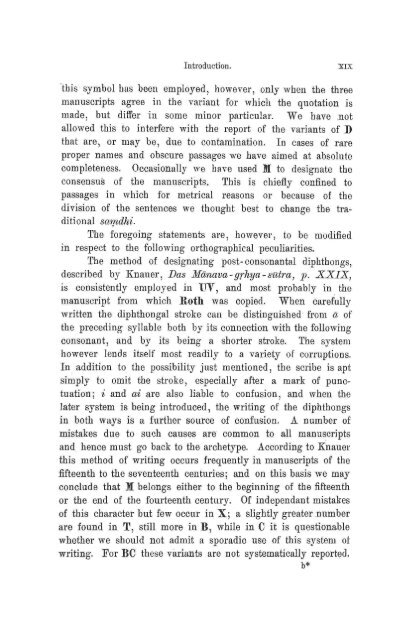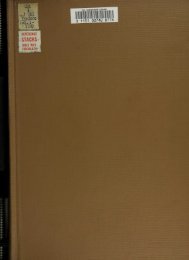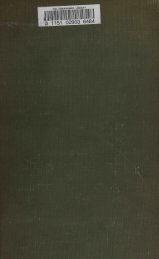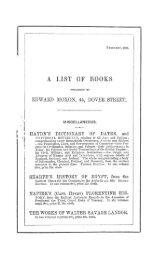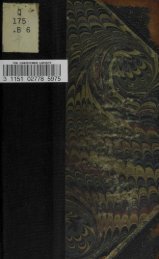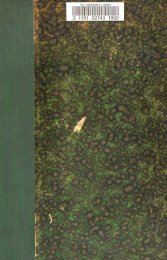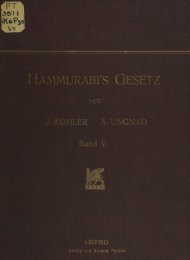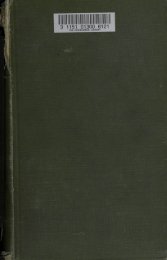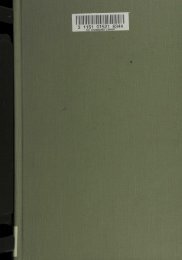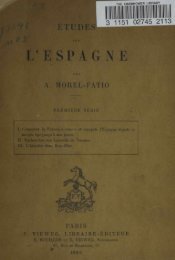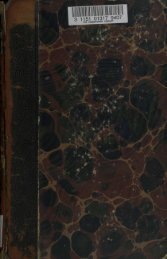TV3V7f A/ ^Afi 18 im - JScholarship - Johns Hopkins University
TV3V7f A/ ^Afi 18 im - JScholarship - Johns Hopkins University
TV3V7f A/ ^Afi 18 im - JScholarship - Johns Hopkins University
You also want an ePaper? Increase the reach of your titles
YUMPU automatically turns print PDFs into web optimized ePapers that Google loves.
Introduction. Xix<br />
this symbol has been employed, however, only when the three<br />
manuscripts agree in the variant for which the quotation is<br />
made, but differ in some minor particular. We have ,not<br />
allowed this to interfere with the report of the variants of D<br />
that are, or may be, due to contamination. In cases of rare<br />
proper names and obscure passages we have a<strong>im</strong>ed at absolute<br />
completeness. Occasionally we have used M to designate the<br />
consensus of the manuscripts. This is chiefly confined to<br />
passages in which for metrical reasons or because of the<br />
division of the sentences we thought best to change the traditional<br />
samdhi.<br />
The foregoing statements are, however, to be modified<br />
in respect to the following orthographical peculiarities.<br />
The method of designating post-consonantal diphthongs,<br />
described by Knauer, Das Manava-grhya-sutra, p. XXIX,<br />
is consistently employed in UT, and most probably in the<br />
manuscript from which Both was copied. When carefully<br />
written the diphthongal stroke can be distinguished from a of<br />
the preceding syllable both by its connection with the following<br />
consonant, and by its being a shorter stroke. The system<br />
however lends itself most readily to a variety of corruptions.<br />
In addition to the possibility just mentioned, the scribe is apt<br />
s<strong>im</strong>ply to omit the stroke, especially after a mark of punctuation;<br />
i and ai are also liable to confusion, and when the<br />
later system is being introduced, the writing of the diphthongs<br />
in both ways is a further source of confusion. A number of<br />
mistakes due to such causes are common to all manuscripts<br />
and hence must go back to the archetype. According to Knauer<br />
this method of writing occurs frequently in manuscripts of the<br />
fifteenth to the seventeenth centuries; and on this basis we may<br />
conclude that M belongs either to the beginning of the fifteenth<br />
or the end of the fourteenth century. Of independant mistakes<br />
of this character but few occur in X; a slightly greater number<br />
are found in T, still more in B, while in C it is questionable<br />
whether we should not admit a sporadic use of this system ot<br />
writing. For BC these variants are not systematically reported.<br />
b*


